At Cornerstone Preferred Resources (CPR), we understand you have choices when it comes to selecting a Third Party Administrator (TPA). That’s why we use a state-of-the-art administrative system that is designed to facilitate all aspects of plan design, enrollment, reporting, and billing, which enables us to review, verify, and process claims in an efficient and timely manner.
-
A Third Party Administrator (TPA) operates much like an independent CPA or law firm. It provides continuing professional services and outside claims and benefit plan administration for client employers and benefit plans. TPAs often become the employee benefits office for the covered workers and employers in the client plan. Traditionally, TPAs have sought a behind-the-scenes role and the identity of the employer or sponsored plan is emphasized as opposed to the TPA firm. Thus, the names of even the largest TPA firms are often not widely known to the general public.
Most TPA client plans employ some degree of self-funding, though in recent years the hallmark of the TPAs success has been their willingness to custom-design and implement plans for the specific needs of each employer or group of workers or health provider arrangement. Because efficient TPAs are often able to provide administration at 40 percent of what insurers and others charge, insurance companies, HMOs, medical providers, and others have increasingly been outsourcing their plan administration to TPAs.
-
Through innovation and careful planning, TPAs have led the way in making cost-effective group employee benefit coverage available to all types of organizations…even the smallest employers.
- TPA clients include every size and format of employment, including:
- Large Taft-Hartley unions/management
- Single employers
- Trade association group employers
- Multiple employer configurations
- State and local governments
- Religious groups
- Hospital- and doctor-sponsored plans (such as PHO, EPO, etc.)
- MSAs
-
Your account information is important and should be available to you anytime from anywhere. CPR provides registered clients easy and secure access to their account information 24/7, with real-time account updates, claims and benefit information, billing statements, reports, and more.
-
- Customized employee communication materials
- On-site involvement at employee enrollment meetings
- Continued plan benefit phone support for employees
- Preparation of plan documents, SPDs, employee identification cards, and claim form(s), if required
- Benefit plan design, maintenance, and enhancements
- Shopping and securing of excess or “stop-loss” coverage to limit your liability
- Assistance in establishing banking arrangements
- Statistical data analysis support/review for future cost projections
- Complete renewal quoting procedures
- Consultation on the full range of employee benefits
- Assistance on your filing of form 5500
-
The TPA industry has helped shape and implement accurate compliance with a host of new government requirements. Every year more than 1,000 new laws, regulations, technical decisions, opinions, court cases, interpretations, and other rulings from about 300 government entities are put into place that employers, plans and/or administrators must obey. Only about 33 percent are adequately announced or explained by the government or technical trade press. And unfortunately, only approximately one percent of all requirements are provided with formal, comprehensive guidance on how to comply.
Contributing to the growth of the TPA market and the Health Care Administrators Association (HCAA) along with the Texas Association of Benefit Administrators (TABA) is the desire of plans and employers to ensure that the professionals well-versed in these government requirements are those who are handling their employee benefit plans. HCAA and TABA members take great pride in the role they have played in spreading coverage for workers and smoothing the often bumpy road of government legislation and regulation.
-
When you see a doctor or other health care provider, you may owe out-of-pocket costs, such as a copayment, coinsurance, and/or a deductible. You may have other costs or have to pay the entire bill if you see a provider or visit a healthcare facility that isn’t in your health plan’s network.
These out-of-network providers may be permitted to bill you for the difference between what your plan agreed to pay and the full amount charged for a service. This is called “balance billing.”
Unexpected balance billing is called “surprise billing.” This can happen when you can’t control who is involved in your care—like when you have an emergency or when you schedule a visit at an in-network facility but are unexpectedly treated by an out-of-network provider.
You’re never required to give up your protections from balance billing. You also aren’t required to get care out-of-network. You can choose a provider or facility in your plan’s network.


